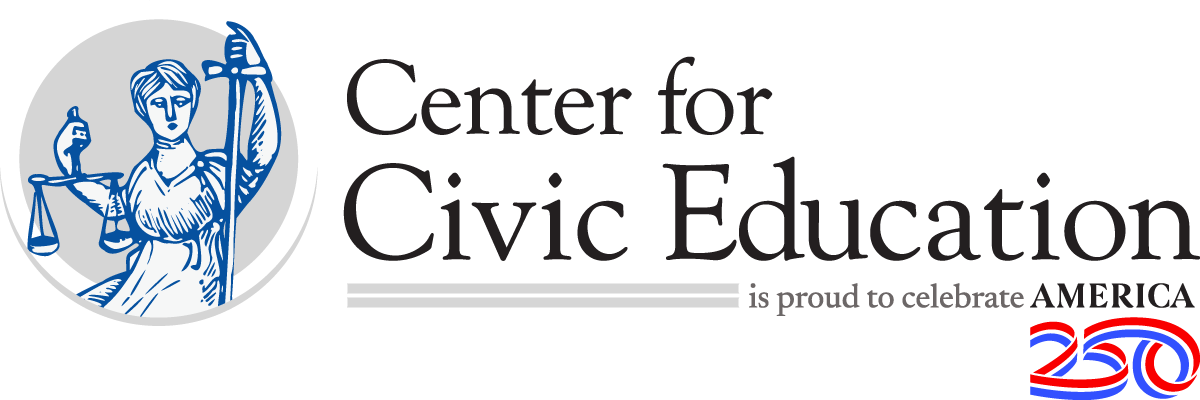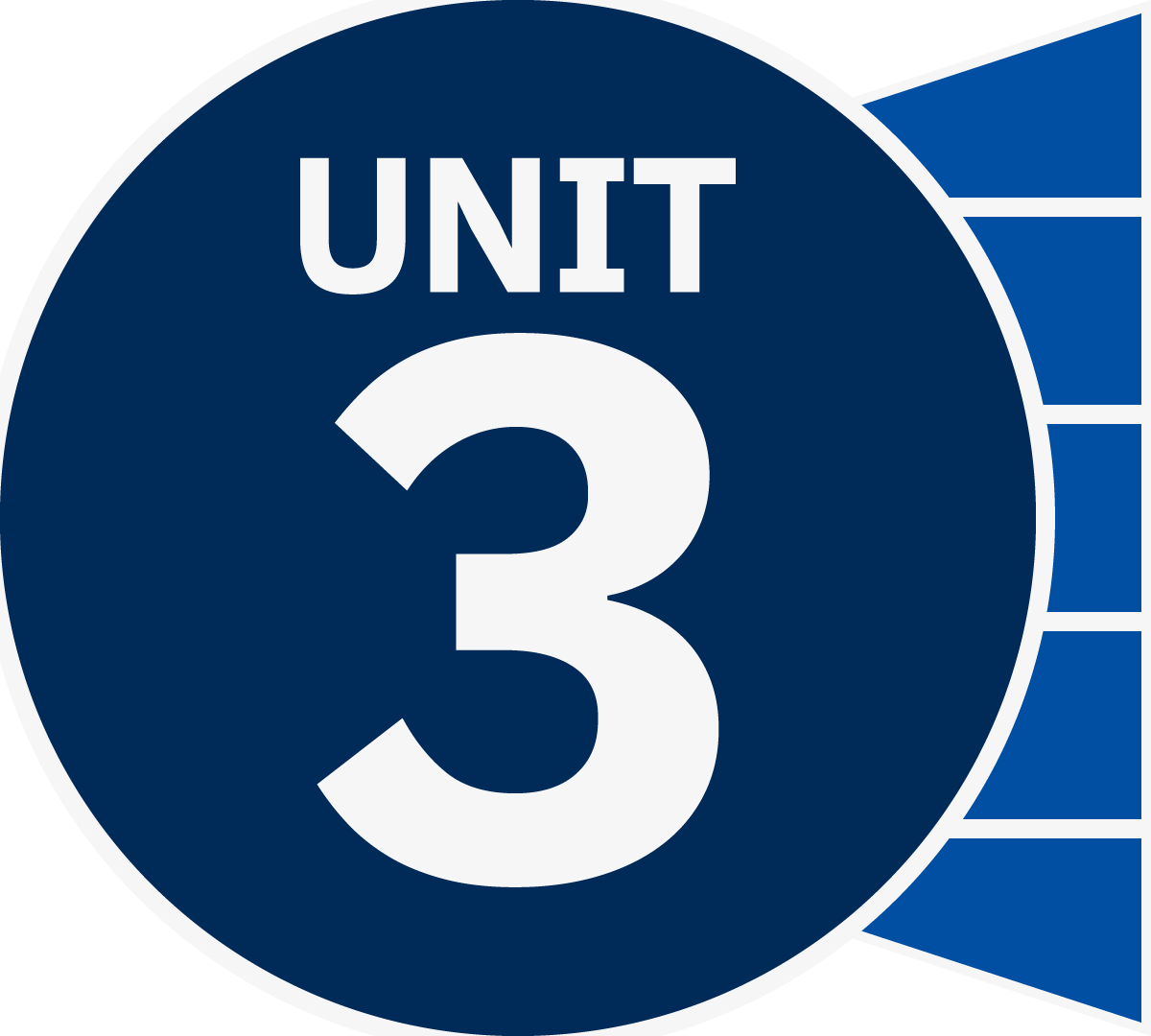Inquiry Companion: Unit 3
In Unit 3 of the We the People: The Citizen & the Constitution textbook, students discover the ways in which our Constitution is a living document that continues to evolve by examining the power of judicial review, the evolution of voting rights, and the impact of the Equal Protection Clause over the course of history.
How is the Inquiry Companion Structured?
Unit 3 challenges students to investigate the successes and failures of our democratic experiment. Our Inquiry Companion Guide activities for Unit 3 facilitate student participation in inquiry-based civics learning for each strategy.
Students engage by discussing a 1965 literacy test, and they explore the formation and function of political parties. They will explain the evolution of the Equal Protection Clause by participating in a civic conversation. Students then elaborate on voting rights and voter suppression through a democratic experience simulation. Finally, students will evaluate their understanding of the controversy surrounding judicial review.
Best practices for culturally responsive teaching weave through each activity.
Inquiry Guide Activity
Students access primary source documents via various analysis methods, allowing students to explore constitutional principles.
In this lesson, students will explore primary sources to understand how the Framers viewed the role of political parties.
Utilize this Explore strategy activity in order to enhance students’ understanding of the We the People: The Citizen & the Constitution textbook for Level 3, Unit 3, Lesson 16 or Level 2, Unit 4, Lesson 20.
We the People: The Citizen & the Constitution (Level 3)
- Unit 3, Lesson 16: What Is the Role of Political Parties in the Constitutional System?
- Unit 4, Lesson 20: How Did Political Parties Develop?
- Active learning
- Attentiveness to political matters
- Critical thinking
- Incorporating evidence
- Primary source analysis
- Reading
- Relationship skills
- Writing
- Identify the role of political parties in the U.S.
- Annotate and analyze primary source documents
- Explore the Framers’ views on political parties
- Should political parties be a part of our democracy?
- political party Any organization that seeks to achieve political power by electing members to public office so that their political philosophies can be reflected in public policy.
The origin and evolution of political parties in the U.S. can be traced back to the early republic. Although not explicitly mentioned in the Constitution, the emergence of political factions became evident during debates over ratification with the emergence of the Federalist and Democratic-Republican parties.
Many of the Framers and Founders had a wary and generally negative view of political parties. George Washington’s Farewell Address cautioned against the divisive influence of what he called “factions.” James Madison also wrote about the potential danger for parties to prioritize their own interests over the common good. These cautionary beliefs about excessive party loyalty and its impact on the democratic process remain relevant and have persisted and evolved throughout American history.
Additional resources for teacher background include the following:
- George Washington Warns Against Party and Faction: The Presidency of George Washington, Pt 11 (Video)
- The Functions of Political Parties: The Evolution of Political Parties, Part 1 (Video)
- The Origins of Political Parties: The Evolution of Political Parties, Part 2 (Video)
- Political Parties in Jacksonian Democracy: The Evolution of Political Parties, Part 3 (Video)
- Political Parties During the Civil War Era: The Evolution of Political Parties, Part 4 (Video)
- George Washington’s Farewell Address Explained (Video)
This lesson is intended for students to discuss the origins of political parties and their constitutional foundations. This is not intended to discuss the platforms of any political parties.
Teachers should preview all student materials and resources prior to the lesson.
- Welcome students to social studies.
- Introduce the inquiry question: “Should political parties be a part of our democracy?”
- Allow students time to make a prediction about the inquiry question as well as offer their own supporting questions.
- To provide a quick review, play The Functions of Political Parties: The Evolution of Political Parties, Part 1. As students watch, tell them to listen for two things that political parties do or two actions political parties take.
- Play the video a second time to support comprehension as needed.
- Collect student responses about political parties on an anchor chart.
- Using your routine strategy for setting up groups, divide the class into groups of approximately three to four student members.
- Tell students they will now get a richer understanding of political parties in the U.S.
- Distribute Introduction to Political Parties and conduct a choral reading or teacher read-aloud, pausing to ensure comprehension.
- Encourage students to work in groups to explore the pros and cons chart at the bottom of Introduction to Political Parties.
- Allow for questions and a brief follow-up discussion.
- Assign each group to one of the primary source exhibits A through D.
- Distribute What Did Our Framers Say? and preview together to ensure students understand the purpose and expectations.
- Review the Annotation Station in What Did Our Framers Say? to ensure students understand how to annotate the Framer’s quote. Consider modeling one quote if needed. Annotation Station guidelines include:
- ❍ Circle words you don’t know, and take a moment to find the definition.
- Highlight in YELLOW phrases that confuse you. Use context clues to figure out their meaning.
- Highlight in RED any references to the negative outcomes of having political parties.
- Highlight in GREEN any references to the positive outcomes of having political parties.
- ✩ Star the phrases or lines that you find most important.
- Assign emerging readers to Exhibit A or B and strong readers to Exhibit C or D.
- Working as a team, students will annotate the Framer’s quote and work together to rephrase the quote in their own words.
- Circulate around the room, encouraging each group, observing progress, and redirecting as needed.
- Return to a full class format and facilitate a brief follow-up conversation by asking the following questions:
- Which Framers supported political parties? Which were opposed?
- What was the major concern about political parties?
- What historical events may have impacted the Framers’ opinions?
- Did the U.S. follow the advice of the Framers about political parties?
- What role do political parties play in government today?
Students will demonstrate mastery of the role of political parties by completing the Exit Ticket to answer the inquiry question: “Should political parties be a part of our democracy?”
Students could create an infographic to illustrate their views on political parties to answer the inquiry question.













